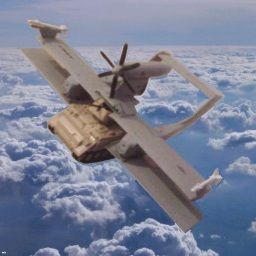cross-posted from: https://sh.itjust.works/post/15122127
Context: https://spacenews.com/im-1-lunar-lander-tipped-over-on-its-side/
Joking aside, it’s still pretty impressive. Landing on the moon is not easy. They landed softly, and the payloads are healthy, so overall I’d consider it a win.
Not precisely defense, and perhaps a bit too credible, but I thought some folks here might enjoy this. Feel free to remove if it doesn’t fit the community. Cheers!


How did they land 2 big ugly bags of mostly water on it, complete with golf clubs and a small car, without flipping, then get them back into lunar orbit? It seems like the deep pool of engineering expertise has dried up somewhat over the decades. Was it just luck and vast amounts of money relative to GDP?
There was a significant amount of manual piloting in the Apollo missions
The guidance gets more difficult in the terminal stages and they didn’t really trust computers to safely control the spacecraft near the surface, so their solution was to have the computer fly 95% of the way down and have the crew take over for the terminal phase.
The Apollo algorithms work fine for non-manned missions as well, but you have to vet the trajectory targets more fully in simulation and add some active retargeting scheme to avoid obstacles near the surface.
Combine the added complexity of a robotic lander with groups like intuitive that have never landed one before, and this sort of thing happens
Thanks for the reply, it helped. I hope human pilots will always be indispensable for MOST Deep Blue hero stuff.
Sure thing!
Honestly I wish we didn’t have to design manned spacecraft to be manually pilotable because you have to make design sacrifices to get there. However, that is unlikely to happen in the lunar program anytime soon
It’s the money. Just at a surface level, if you compare the rockets that launched these missions (falcon 9, H-IIA, LVM3, Soyuz), theres just a lot less mass being sent to the moon with these landers, which means less margin for error. Apollo 11 was also predated by 10 test launches, including a full on dress rehearsal where they intentionally did the whole mission except the last 15 km of descent. Apollo also allowed itself to rely on human pilots to deal with the difficult problem of flying and landing a craft unlike any other in an environment unlike any other, which these machines have to do autonomously
Good point, I didn’t know about the dress rehearsals! Fascinating stuff.
The bags did the steering.